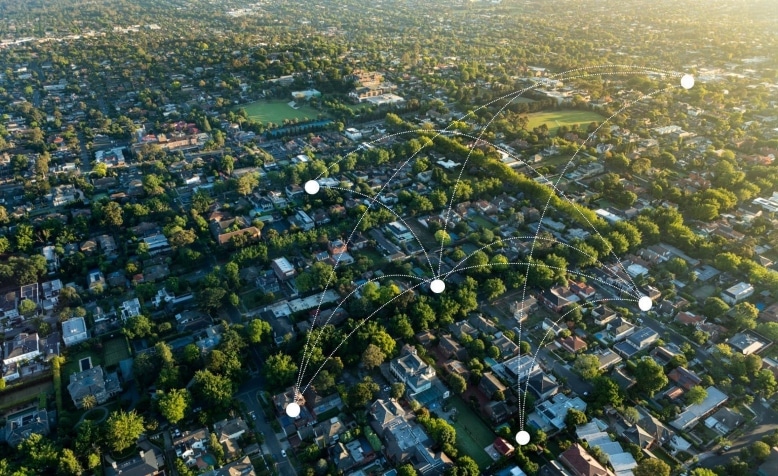Broadband Office Name: North Dakota Information Technology Department
BEAD Award Amount: $130.2 M
North Dakota Broadband Director: Brian Newby
North Dakota BEAD Program Tracker
| State | IP Vol 1 Approval | IP Vol 2 Approval | Challenge Process Submission Closed | Submitted Challenge Results to NTIA | Challenge Process Results Approved by NTIA | 1-Year Subgrantee Selection Process |
|---|---|---|---|---|---|---|
| North Dakota | Yes | No | Yes | No | N/A | N/A |
North Dakota BEAD Program Information

Key Updates
North Dakota has successfully achieved approval for their Initial Proposal Volume 1 and has completed the State BEAD Challenge Process.
The state is currently in the final determination phase of the challenge process, which will run from June 18 to July 18, 2024.
North Dakota is also awaiting NTIA approval for their Initial Proposal Volume 2.
North Dakota BEAD Program Plans & Maps
North Dakota BEAD Program Initial Proposal Volume 2: Overview
*Information is subject to change. North Dakota is awaiting official approval of Initial Proposal Volume 2 from the NTIA.
BEAD Long-Term Objectives
The North Dakota Information Technology (NDIT) Department has outlined the following goals for its broadband initiatives:
- Promote Universal Access for All:
- Deploy broadband infrastructure to ensure everyone has access to high-speed internet service by 2028.
- Promote Broadband Affordability:
- Expand the availability of low-cost, high-speed internet options for cost-burdened customers.
- Support Economic Growth:
- Provide individuals and businesses with the resources needed to support economic development.
- Increase Broadband Adoption:
- Equip all North Dakotans with the necessary skills and training to adopt and utilize the internet effectively.
North Dakota BEAD Program Project Area Design
Given that only 3% of locations in North Dakota are considered unserved or underserved, the state will allow subgrantees to submit applications for the locations they wish to serve.
Application Requirements for Potential Subgrantees:
Subgrantees must submit updated information for the following scoring criteria:
- Costs: Detailed cost estimates for the proposed broadband deployment.
- BEAD Match: Information on how the subgrantee will meet the matching fund requirements of the BEAD program.
- Affordability: Plans to ensure the affordability of the broadband service for consumers.
- Speed to Deployment: Project timelines indicating how quickly the broadband service will be deployed.
- Speed of Network: Specifications of the network speeds that will be provided.
- Other Technical Capabilities: Additional technical features and capabilities of the proposed broadband service.
- Local and Tribal Coordination: Efforts to coordinate with local governments and Tribal entities.
North Dakota BEAD Program Extremely High Cost Threshold
North Dakota will determine the Extremely High Cost Per Location Threshold (EHC) through the following steps:
- Collect Applications:
- Gather priority and other last-mile project applications.
- Initial Scoring:
- Determine the highest scoring initial round priority and other last-mile applications.
- Remove Unique Applications:
- Remove the highest scoring applications for project areas that have only one project type.
- Average BEAD Outlay:
- Identify the average BEAD outlay per location.
- Optimize Model:
- Use an optimization model to identify the EHCT.
- Identify High-Cost Applications:
- Identify applications that exceed the EHC.
BEAD Deployment Subgrantee Selection
NDIT is asking for the following preregistration evidence from subgrantees and compliance with: Financial capability, managerial capability, operational capability, technical capability, ownership info, public funding info, compliance with laws, cybersecurity/supply chain compliance, and BABA/EHP/NEPA/NHPA compliance.
Primary Scoring Criteria for Priority Broadband Projects
- 200 pts – Minimal BEAD Outlay
- 60 pts + 10 possible pts of extra credit – Affordability
- 50 pts + 10 possible pts of extra credit – Fair Labor Practices
Secondary Scoring Criteria
- 55 pts – Speed to Deployment
- 10 pts – Speed of Network
- 10 pts + 10 possible pts of extra credit – Local and Tribal Coordination
- 10 pts + 10 possible pts of extra credit – History of Successful Deployment in North Dakota
Primary Scoring Criteria for Last-Mile Broadband Projects
- 200 pts – Minimal BEAD Outlay
- 60 pts + 10 possible pts of extra credit – Affordability
- 50 pts + 10 possible pts of extra credit – Fair Labor Practices
Secondary Scoring Criteria
- 10 pts – Speed to Deployment
- 40 pts + 10 possible points of extra credit – Speed of Network and Other Technical Capabilities
- 10 pts + 10 possible pts of extra credit – Local and Tribal Coordination
- 10 pts + 10 possible pts of extra credit – History of Successful Deployment in North Dakota
BEAD Non-Deployment Subgrantee Selection
NDIT Department will use the following criteria to choose subgrantees and proposed initiatives:
- Minimal BEAD Program Funding:
- Preference will be given to projects requiring minimal BEAD program funding.
- Impact on Broadband Access/Affordability:
- Evaluate the project’s potential to significantly improve broadband access and affordability.
- Sustainability of Initiative:
- Assess the long-term sustainability of the proposed initiative.
- Return on Investment (ROI):
- Consider the expected return on investment for the state and the community.
- Impact on Identified Need or Gap:
- Measure the project’s effectiveness in addressing specific identified needs or gaps in broadband coverage and digital equity.
Use of Available Funds:
- The state will consider using funds for eligible activities that align with the BEAD Notice of Funding Opportunity (NOFO), provided funds are available.
BEAD Eligible Entity Implementation
North Dakota plans to implement the following activities without making a subgrant, organized into three key categories:
- Administering the BEAD Program:
- Overseeing and managing the BEAD program operations and compliance.
- Supporting Efforts of State Agencies:
- Assisting state agencies in their broadband and digital equity initiatives.
- Establishing and Organizing Statewide Working Groups:
- Creating and coordinating statewide working groups to address various broadband-related issues, including digital equity, infrastructure development, and workforce development.
BEAD Local, Tribe, and Regional Broadband Planning Process
Tribal Engagement:
- Quarterly Meetings: Meet with each of the five federally recognized tribes in North Dakota on a quarterly basis.
Broadband Advisory Committee:
- Membership: Includes representatives from the State of North Dakota.
- Meetings: Held quarterly.
Working Groups:
- Digital Equity Working Group
- Broadband Infrastructure Working Group
- Workforce Development Working Group
Engagement Activities:
- Interviews:
- Conducted interviews with 26 internal state department leaders and 12 external stakeholders.
- Targeted Focus Groups:
- Held seven targeted focus groups.
- Surveys:
- Distributed online surveys through stakeholders.
- Conference Attendance:
- Participated in various conferences.
- Public Outreach Events:
- Food Truck Rodeo
- Lake Regions Arts Festival
- West River Community Center Pool Party
- Jamestown Art Market
BEAD Labor Standards & Protection
NDIT requires all BEAD subgrantees to submit the following information:
A record of past compliance with federal/employment laws:
- Must address info on deployment projects within the last 3 years.
- Certification form from an Officer/Director level employee of past compliance.
- Written confirmation that subgrantee has disclosed any violations from contractors within the last 3 years.
- Discussion of workforce plan
Plans for ensuring compliance with federal/employment laws:
- How subgrantee will ensure compliance in its labor/employment practices.
- Info on applicable wage scales, wage, and overtime practices for each class of employee expected to be involved in physical construction of the network.
- How subgrantee will ensure implementation of workplace safety committees.
- Comply with the Prevailing Wages Act.
- Other items as outlined in the BEAD NOFO.
BEAD Minority Business Enterprises / Women’s Business Enterprises / Labor Surplus Area Firms Inclusion
NDIT Department plans to implement the following strategies to support Minority Business Enterprises (MBEs) and Women Business Enterprises (WBEs):
- Solicitation Lists:
- Place qualified MBEs and WBEs on solicitation lists to ensure they are considered for relevant opportunities.
- Targeted Solicitation:
- Ensure that MBEs and WBEs are solicited whenever they are potential sources for contracts or subcontracts.
- Dividing Requirements:
- Divide total requirements, when economically feasible, into smaller tasks or quantities to maximize participation by MBEs and WBEs.
- Encouraging Participation:
- Establish delivery schedules that encourage participation by MBEs and WBEs.
- Utilizing Support Services:
- Use the services and assistance of organizations such as the Small Business Administration (SBA) and the Minority Business Development Agency (MBDA) of the Department of Commerce.
BEAD Cost & Barrier Reduction
1. Promoting the use of existing infrastructure.
2. Promoting and adapting dig-once policies.
3. Streamlining permitting processes.
4. Streamlining cost-effective access to poles, conduits, and easements.
5. Streamlining rights of way, including the imposition of reasonable access requirements.
BEAD Low-Cost Broadband Service Option
North Dakota will adopt the low-cost option outlined in the BEAD Notice of Funding Opportunity (NOFO) with the following modifications:
- Cost:
- The plan must cost $30 per month or less, inclusive of all taxes, fees, and charges, or $75 per month if the subscriber resides on Tribal Lands.
- This monthly cost may be adjusted pending changes in the Affordable Connectivity Program (ACP) subsidy amounts.
- Applicants may seek a waiver to increase the cost of the service plan if they can provide proof that the $30 service option is cost-prohibitive or not reasonably possible.
- Speeds:
- The plan must provide consistent and reliable download speeds of at least 100/20 Mbps.
- Affordable Connectivity Benefits Application:
- The plan must allow end users to apply the ACP subsidy to the service price, pending program continuation.
- Internet Service Providers (ISPs) are encouraged to raise awareness of their participation in the ACP.
- Subgrantees will be required to participate in any successor program to ACP if the program is not renewed.
BEAD Middle-Class Affordability
Benchmarking Low-Cost Service Option:
- The State Broadband Program Office will benchmark the costs committed by prospective subgrantees to the Low-Cost Service Option of $30 per month.
- Applicants that commit to providing a service package with 1 Gbps/1 Gbps download/upload speeds, inclusive of all taxes, fees, and additional charges, at a cost less than or equal to the Low-Cost Service Option will receive full credit in the evaluation process.
Broadband Infrastructure Working Group:
- North Dakota will establish a Broadband Infrastructure Working Group, which will include members from Internet Service Providers (ISPs).
- This working group will be leveraged to collectively identify opportunities to increase broadband affordability for middle-class families.
